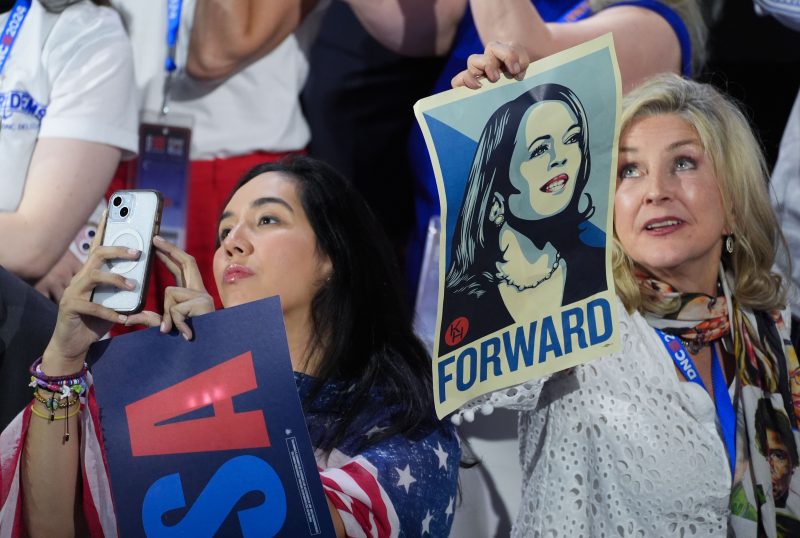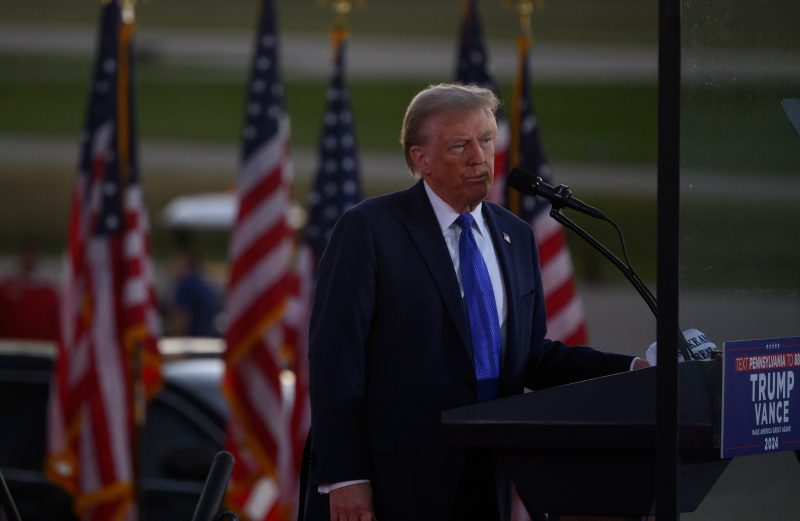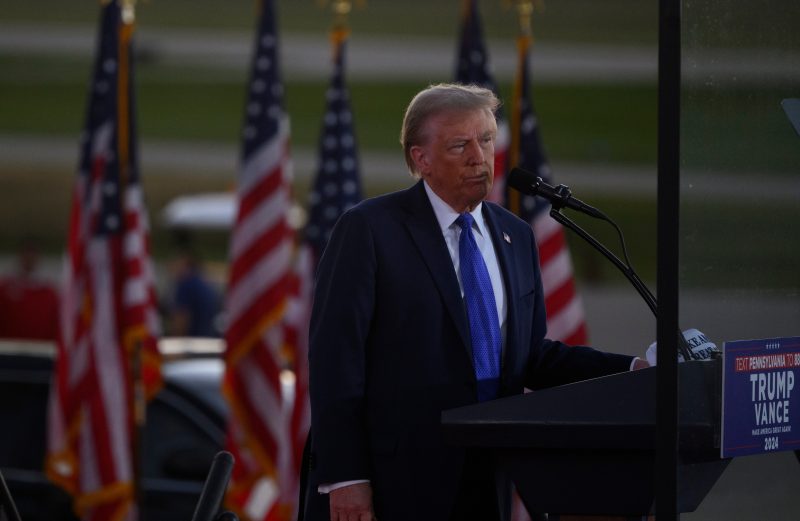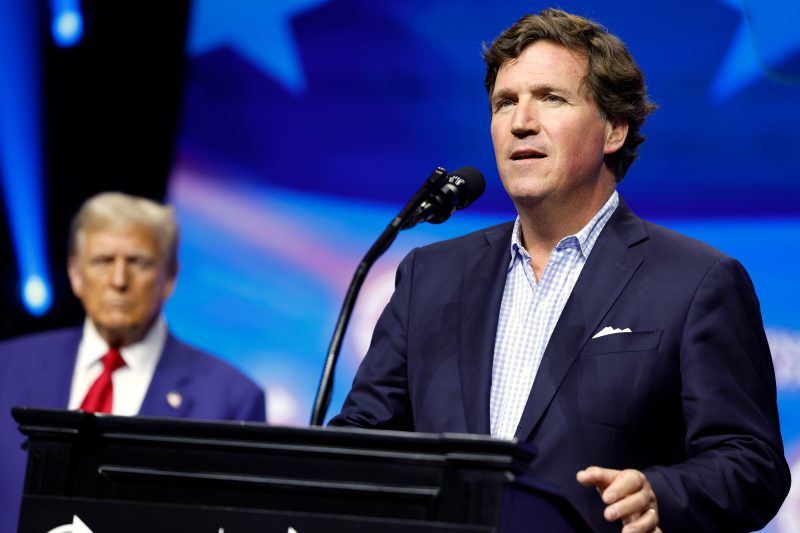
Harris campaign turns to former Obama advisers to help in White House bid
Vice President Kamala Harris is pitching herself as a forward-looking bridge to the future — but she’s doing so with a little help from the past.
Since emerging as President Joe Biden’s replacement at the top of the ticket following his disastrous debate performance in late June, Harris has brought on several high-profile veterans of former president Barack Obama’s two campaigns, as well as a top adviser to Hillary Clinton’s 2016 campaign.
Now, with Harris seeking to become the first woman — and the first Black and Indian American woman — to win the White House, the question remains if the experienced Obama and Clinton hands can help recreate the Obama magic of 2008. Democrats are hoping they can help Harris harness her newfound enthusiasm and momentum into electoral success as they did with Obama in 2008, as well as deploy the lessons learned working for historic Black and female candidates to help Harris navigate her history-making bid.
“This is all-hands-on-deck, and it doesn’t matter what people did in the Obama campaign or the Clinton campaign or the Kerry campaign,” said John Anzalone, a Harris campaign adviser and pollster, who worked on both Obama campaigns and Clinton’s 2016 bid. “I don’t care where you learned your talents. Everyone who has done these things at a high level and understands what’s at stake…. I’ll carry Walz’s briefcase if it will help the mission.”
The group includes David Binder — who led Obama’s public opinion research operation — taking on an expanded role in the Harris campaign; Stephanie Cutter, Obama’s 2012 deputy campaign manager, taking on an expanded role as senior adviser for strategy messaging; David Plouffe — a top strategist on both Obama campaigns and senior White House adviser — joining as a senior adviser for strategy; and Mitch Stewart, the grassroots strategist on both Obama campaigns, joining as the senior adviser for battleground states. Jennifer Palmieri, the communications director for Clinton’s 2016 campaign, also joined the Harris-Gov. Tim Walz (D-Minn.) campaign last month as a senior adviser to second gentleman Doug Emhoff.
Some of the staffers on the original Biden-Harris campaign are sensitive about the new additions, in part because they view the Obama diaspora as having lead the charge to push Biden out — and there are still some private whispers from Obamaworld that the help is much-needed.
“There was a feeling that the B team was in control of the Biden campaign, and now there’s a lot more comfort that Kamala Harris is bringing in the A team and a lot of those people were people who were on Obama 2008 and 2012, and on Hillary,” said a former Obama campaign staffer, speaking on the condition of anonymity to share a candid criticism. “These are people who have had to navigate complex racial and gender dynamics in American politics and people who handled that deftly.”
But those joining the Harris-Walz campaign — as well as those who have been toiling away for months at headquarters in Wilmington, Del. — say that the new hires are additive and enhance the final sprint to Election Day. Many point to the fact that most of the new faces were specifically brought in by campaign chair Jen O’Malley Dillon, who held top roles in both Obama campaigns and who Harris asked to stay on in her role as campaign chair.
Cutter was even more blunt: “I want to say first that there is an experienced campaign team in place and anybody being added now is simply that — additive,” she said. “The one thing that unites us is our determination to win, and there are no egos.”
The Obama hands bring years of experience navigating thorny and racial issues. Obama, after all, became the first Black person to win the presidency and did so, in part, by managing to talk about race in a way that felt inclusive and non-threatening. Strategically, Obama and his team also sought to not make race a cornerstone of his campaign, believing that voters understood the historic nature of his bid simply by looking at him, and dwelling on his race would have been counterproductive, several Obama advisers said.
Those who worked for Clinton also learned lessons of what does — and doesn’t — work when trying to lift a woman to the highest office.
“Obama understood that if the campaign just devolved into a race war and name-calling, it wouldn’t necessarily be good for him,” said Lis Smith, a Democratic strategist, adding: “It’s a reminder to Democrats in the post-2016 world, where it’s become very fashionable to always call Republicans sexists, homophobes, racists, xenophobes, that you don’t always need to take the bait on their attacks … Sometimes it’s just better to rebut them and say whatever they’re saying is offensive, and then go back to the issues people care about.”
Harris, for her part, has so far very deliberately steered clear of the historic nature of her bid. In her first sit-down television interview since becoming the Democratic nominee with CNN, she stressed wanting to be a president for “all Americans.”
Asked about an iconic photo of her grandniece, in braided pigtails, watching her officially accept her party’s nomination, Harris called the image “very humbling” and described herself as “deeply touched” but otherwise did not delve into the symbolism and emotion the photo conjured for so many.
When asked in the same interview about Trump’s July comments that Harris had only recently “happened to turn Black,” she offered a can-barely-be-bothered seven-word dismissal: “Same old, tired playbook. Next question, please.”
At the presidential debate in Philadelphia Tuesday night, Harris again used a back-and-forth on race not to lean into the historic nature of her bid, but to speak in broader, almost Obama-like terms about unifying the nation rather than allowing race to be a divisive force.
“It’s a tragedy that we have someone who wants to be president, who has consistently over the course of his career, attempted to use race to divide the American people,” she said. “You know, I do believe that the vast majority of us know that we have so much more in common than what separates us, and we don’t want this kind of approach that is just constantly trying to divide us, and especially by race.”
The answers epitomized Harris’s playbook: to generally avoid Trump’s provocations and to respond, if at all, on her own terms. When Trump first made his comments about Harris turning Black, some Democrats urged her team to promptly hit back, to immediately go out and tell her personal story. But Harris’s team resisted, doubling down on their belief that Trump doesn’t get to dictate how she defines herself, or how and when she tells her own story, said someone familiar with the discussions.
“One of the lessons that Vice President Harris’s mother instilled in her is don’t let anybody tell you who you are,” Cutter said. “You show them who you are, and that’s exactly what she’s doing.”
Cutter, a senior adviser on Obama’s 2008 campaign, also served as Michelle Obama’s chief of staff then, helping Michelle Obama parry attacks from the far-right, which tried to paint her as an angry Black woman. Some of those lessons, Cutter said, also apply to Harris.
“The strategy in ‘08 was based on letting America meet Michelle Obama in an unfiltered way, because her authenticity and ability to relate to every American was extremely real, so we wanted to do that before any opposition forces — or, frankly, the media — did that in a tainted way,” Cutter said. “That’s exactly what’s happening with Vice President Harris right now, but in an expedited fashion because of the nature of the race. Letting her be who she is, without anybody else’s filter on it is the reason she is sparking such excitement.”
One concern about the new high-profile new additions, however, is that they are all White — a notable aberration for Harris, who has prioritized elevating women and people of color within her inner circle.
“The thing I’m most worried about with this crop of people is the one characteristic they share is they’re all White,” said an original 2008 Obama staffer, speaking anonymously to share a candid opinion. “I don’t think the conversation about race is the same in the post-George Floyd, 2024 world as it was in the 2008 Obama era.”
Palmieri, meanwhile, said she joined the campaign in the final months because “I feel like I learned really valuable lessons during the Clinton campaign and then in working through a lot of research in the eight years since about the kind of questions we have for women candidates and how you best support them. The notion of working for the male spouse of the first Black and female president was really appealing to me.”
Experts say that female candidates, for instance, often need to highlight their credentials more than male ones — and someone like Emhoff, Harris’s husband, can serve as a compelling validator.
The other aspect of Obama’s victory — especially in 2008 — that Democrats hope to replicate is harnessing the authentic, grassroots enthusiasm that exists within the party and then turning that into a movement of loyal foot soldiers.
“In order to win this election and to capitalize on the sort of enthusiasm and energy and everything that we’re seeing on the ground since the vice president got to the top of the ticket, you have to have an infrastructure that was built to sustain that,” said Quentin Fulks, the Harris-Walz principal deputy campaign manager. “We were on pace building out an infrastructure to do that, and that is why we have been successful capturing this energy and being able to maneuver from one candidate to another candidate, being on the top of the ticket.”
Sixteen years after Obama made history as the nation’s first Black president — and eight years after Clinton nearly made history as the nation’s first female president — the landscape Harris faces has changed, in part because of those who came before her.
“Obama and Clinton had to go and do it first, and I think there’s more and more people who are looking at Kamala Harris and what she brings to the table and the future of America more than race,” Anzalone said. “When people break barriers, like President Obama did, it clearly makes it different and easier for the next person to come along. So I think that in some ways, all the dynamic traits that Harris brings to it, people tend to see those with more clarity beyond her race or beyond her gender.”



